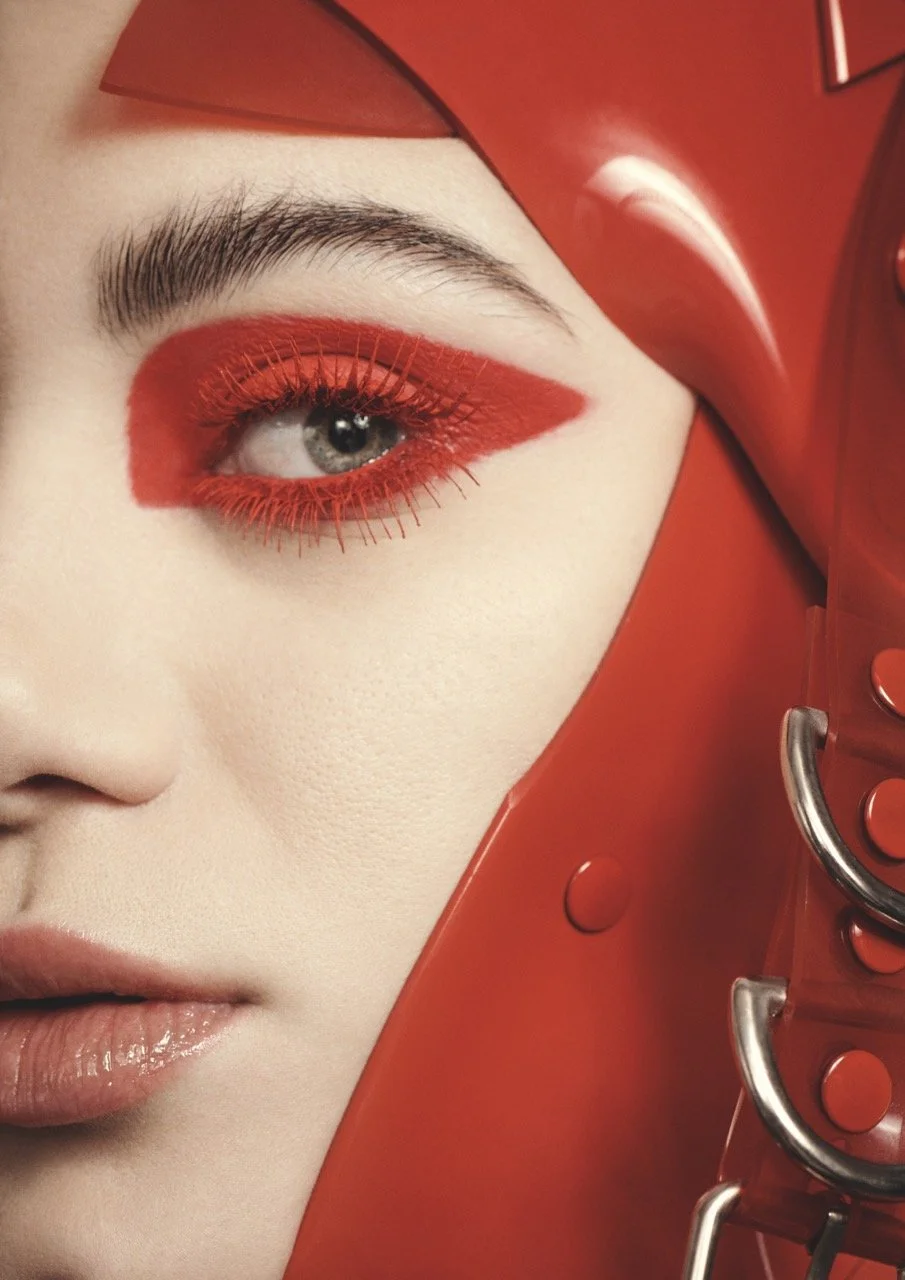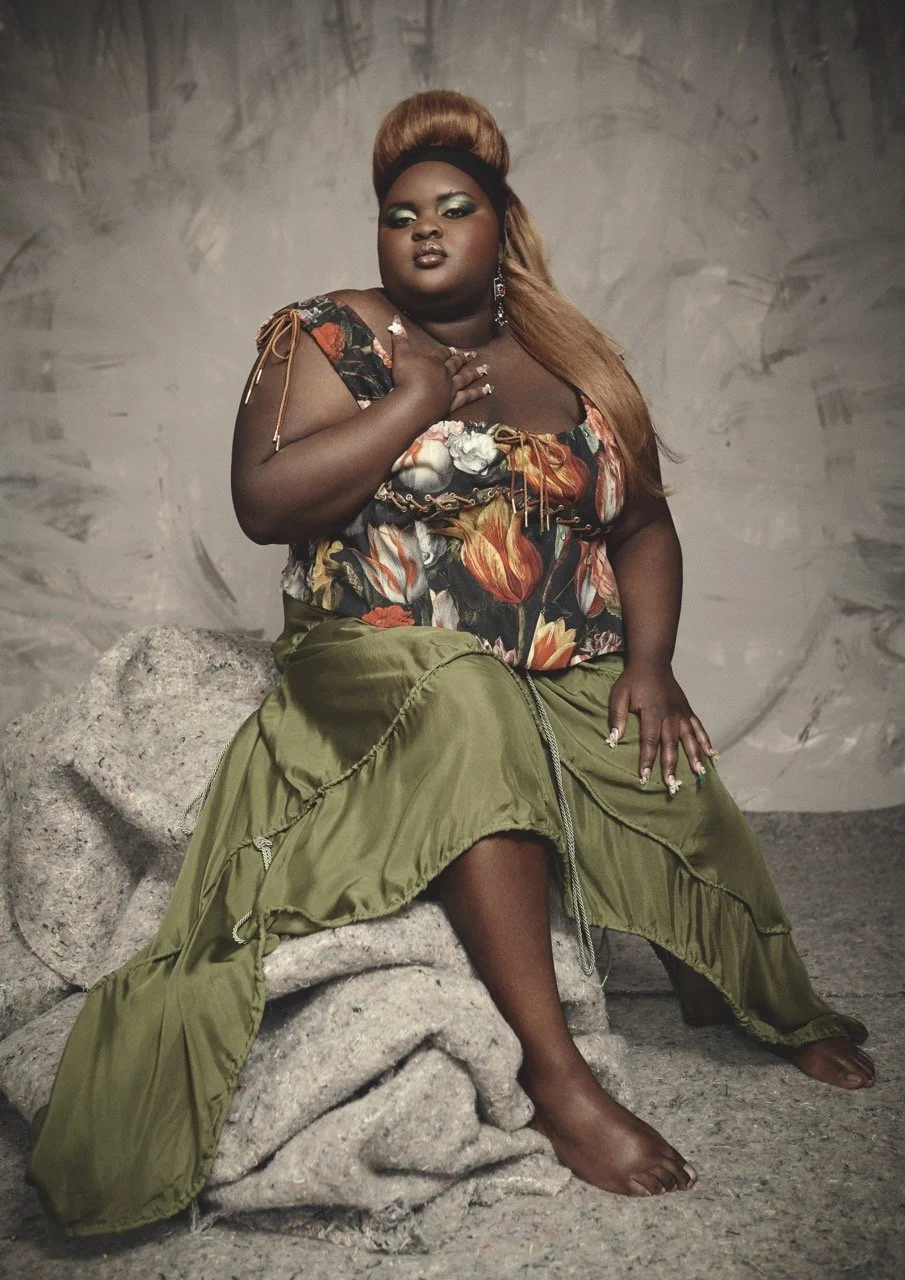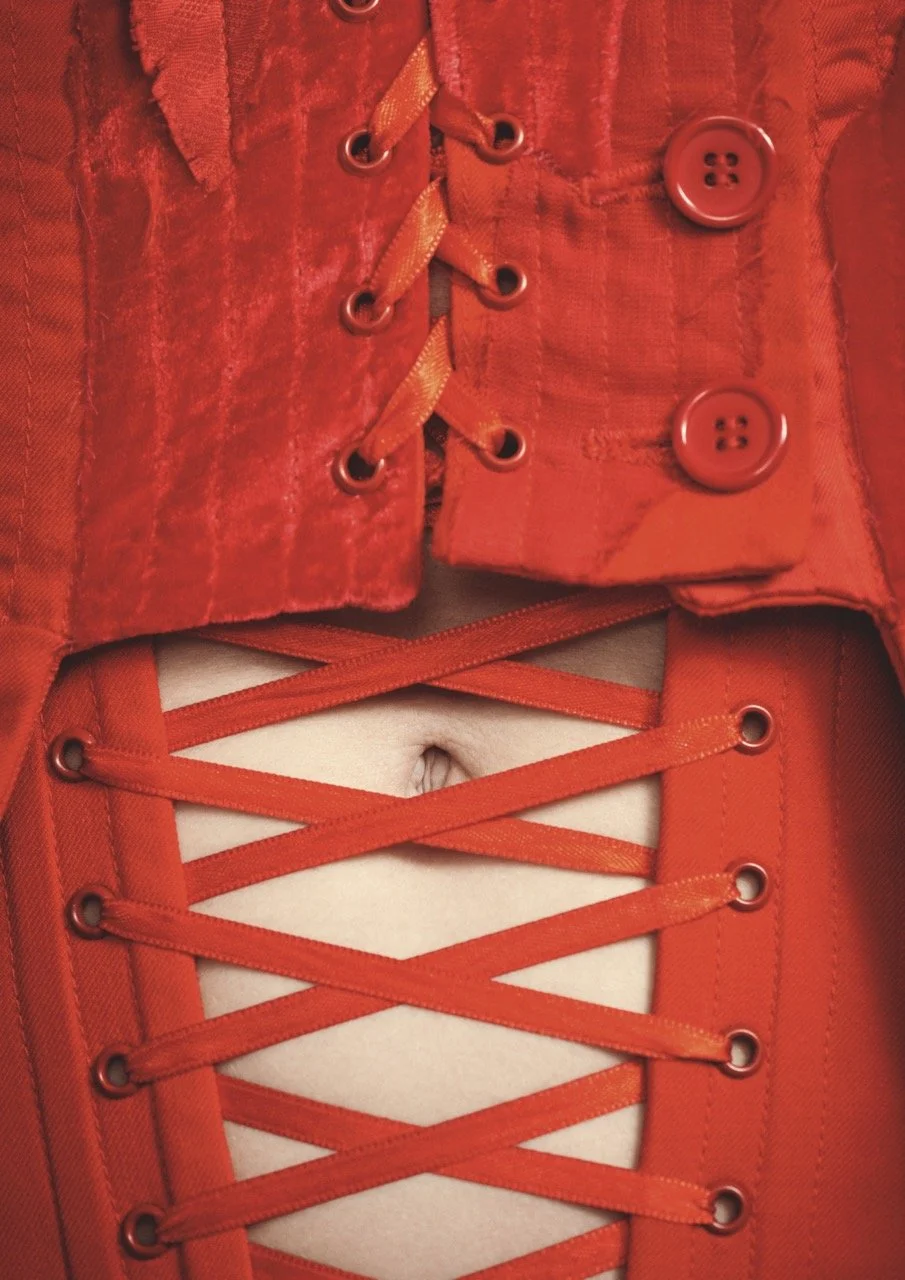Reclaiming the Corset: Merde 4 Cover
Reclaiming the corset: romanticizing the past, exploring pastiche and dismantling narratives of power around the underwear-as-outerwear trend.
By Yolanda Senekal
We have reverted to loungewear for far too long. As we emerge from this lingering pandemic there is a growing desire to slip into something a little less comfortable and a little more risky . Enter the corset. Seen on TikTok, Instagram, celebrities like Dua Lipa and Bella Hadid, and on the runways of Simone Rocha and Mugler, this fitted, structural piece is the quintessential antidote to sweatpants. The corset has stepped out of the magazine and off the runway, adopted by all bodies regardless of gender, age or space. London based cover photographer.
Arved Colvin-Smith captures the phenomena of the corset, featuring emerging corset designers from around the world inspired by the garment’s traditional and old-fashioned tales of love and lust.
Lara wears Syban headpiece, Carpe Luna Catsuit, Corsetorium corset and Slim Barrett earring worn as brooch.
In 2021, the corset teeters between conflicting discourses. Thanks to period shows like Netflix’s Bridgerton, Hulu’s The Great and a multitude of TikTokers who take this boudoir dressing and define new narratives in our modern age, the corset is used as a tool to escape the pressures of the present and conjures a sense of an idealized past. Though, perhaps we shouldn’t be so quick to idealize an object that historically signified women’s oppression and glamorized body modification. This makes the trend even more juicy in an era of “woke” culture, intersectional feminism, body positivity and non-binary gender politics. TikTok exaggerates the dangers of Victorian beauty with users trying on corsets to lyrics “no one wants a waist over 9 inches,” which gives the corset a modern media platform. Is the corset a harmful fad, not unlike the girdle-esque ‘waist trainer’ shaping garment? Either way, by making fun of unrealistic beauty ideals, the corset’s unprecedented screen time has skyrocketed the piece into contemporary consciousness.
Whilst corsets may no longer be worn in their traditional sense as undergarments, they continue to be associated with the internalized ideal of the hourglass physique– thanks, in no small part, to the notorious Kim Kardashian and her hyperbolic curves. By publicly displaying and discussing their carefully curated and controlled bodies, celebrities and consumers do not denounce or oppose the imposition of a difficult-to-achieve “ideal” body shape. Rather, many wearers celebrate the freedom to redesign their own bodies. This celebration is exemplified by Turkish-British designer Dilara Findikoglu, who has spoken out about climate change, women’s rights, marriage equality and gender disparity throughout her recent seasons’ designs. Cover model Nadja wears a red outfit by Findikoglu, calling on punk, metal and goth subcultures not typically equated with antiquated corset aesthetics. Findikoglu’s personal, radical and often theatrical …
corsets are less about the shape beneath the garment and more about advocating for a carefree, non-judgmental approach to experimental dressing and self image.
Nadja wears Dilara Findiikoglu, Jivomir Domoustchiev headpiece and Slim Barrett Ring.
The garment trending today is not the corset of the 19th century. We don’t all have a Jack Sparrow to jump in the water to save us after a corset-induced fainting spell, though the very physical act of cutting someone out of a garment to breathe does conjure excitement. This notion of ‘cutting off’ or cinching is central to the definition of the corset as having a separate purpose from the bustier, despite their deceptively similar designs. Constructed differently and for a different purpose, the bustier ‘boosts’ rather than cinches.
The language around corset construction certainly seems to boost one’s libido;
the ‘boning’ is the part of the corset that holds it up vertically, and grommets can be construed as kind of sexual holes assisting the wearer in tying, or untying their garment.
Today, the corset is made from stretchier fabrics and offers little to no cinching, with a particular demand for sustainable materials. Colvin-Smith captured model Noah wearing T-Label, who sources sustainable fabrications, combining feminine shapes with dramatic elements inspired by fencing wear. While a niche interest in tight-lacing, shapewear and waist-training persists, the changing dynamics of contemporary fashion have allowed the corset to become an exercise in accessorizing individuality, rather than modification to an ideal.
Fashion historian Valerie Steele believes the corset is shrouded in mythology and misinformation. She notes that its consequential health issues are vastly exaggerated and that the condemnation of the corset as an attack on the female body is part of a larger reductive ethos that blames women for being interested in fashion.
Corsetry was not a single monolithic experience that could only be unlaced by feminism.
Some women did experience the corset as an assault on the body, but the corset also had many positive connotations including erotic culture. Steele notes that the corseted body was not a mere victim of fashion and patriarchal oppression. It could also function as a tool to take control of one’s own body and sexuality. In order to take control, the context must first be subverted.
The rise of the punk movement in the 1970s was the agent that instigated the corset’s changing provocative nature towards undermining moralistic social norms, through explicit violence and sexuality. Vivienne Westwood revived the punk corset on the runways, further shifting it’s oppressive narrative to a feminist one. There was a feeling of commanding power, calling out taboos and purposefully making the observer feel uncomfortable. This discomfort is essential to employment of the corset today. Seeing and being seen was a rare occurrence in 2020, so why not wear a corset to the grocery store? Shock value has changed since Madonna graced the stage for her Blonde Ambition tour in the famous Jean Paul Gaultier cone corset. While the corset remains perennially in fashion as a symbol of exaggeration to disorient and disrupt, its context has become largely democratized. Anyone and everyone can find a corset that calls out to their individual sense of freedom.
Fashion is a symbolic system that constantly shifts the boundaries of the expression of sexuality - both erotic attraction and gender identity. As a broader spectrum of body shapes, gender expressions and sexual identities choose to wear the corset, its symbolic oppression is further subverted. Colvin-Smith captures Ed wearing a Pritch London Corset, whose designer Ana Pritch embodies this subversion with the intention of creating non-conformist luxury. She states: “Clothes have a transformative power, and are an unspoken statement.” Leaving the house dressed in a corset is a transformative statement powerful enough to emancipate anybody who has questioned their identity.
Ed wears a Pritch London Corset and House of Sheldonhall Skirt
The very physical experience of wearing a corset gives one a sense of agency and active participation in donning this controversial piece.
The fleshy sensation of wearing a structured garment gives a feeling of strength in the torso. The ability to stand straight and hold one’s head high gives the wearer the ability to navigate and manipulate existing social constructions of femininity to their own advantage, like an empowering kind of armor.
A garment with strong codes of pleasure and sumptuous power is bound by the paradox of those who choose corsetry to reclaim their sexual agency, and those who wish to fit into imposed beauty standards. As more designers begin to create clothes for diverse bodies, the corset is enjoyed as more than just a garment subservient to an idealized feminine body shape. It becomes a symbol of intersection within high fashion’s classic conundrum– to disrupt yet sell, to liberate yet comply. The challenge remains to constantly push boundaries to diversify ideals of beauty and gender. Will you lace up or bow out?
Nadja wears Sorcha O’raghallaigh - (right & left ear) Big hoop, Maria Black - Middle hoop, Missoma - Top hoop, Astrid & Miyu - Rings, Pebble London











